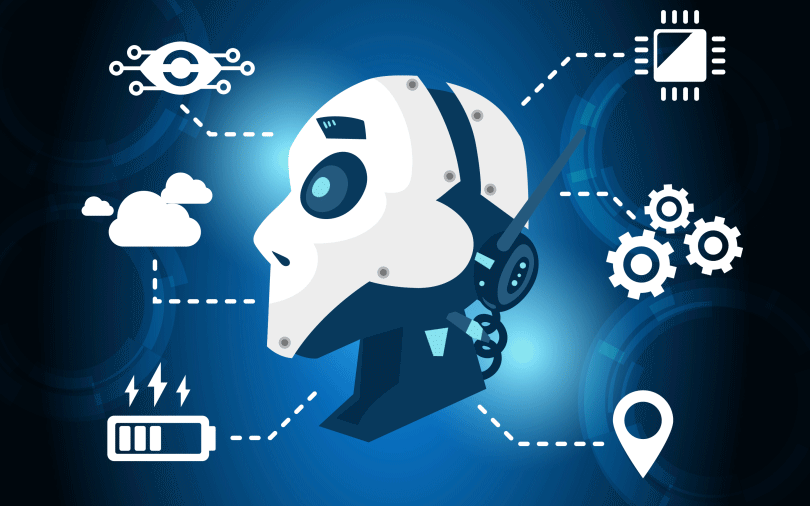
Artificial Intelligence and it’s uses
What is AI?
Artificial Intelligence (AI) refers to the simulation of human intelligence programmed into the machines, that makes it possible for them to learn from experiences, adjust to new inputs and perform human-like tasks.
Types of AI

On a higher level AI can be classified into two categories:
Narrow Artificial Intelligence
Narrow AI, also referred as Weak AI is a kind of AI that has been trained to perform specific tasks without being explicitly programmed to do so. Examples of Narrow AI can be found all around us like; Image recognition, Virtual assistants, recommendation engines, spoof detection software, etc.
Artificial General Intelligence
AGI (Artificial General Intelligence) is a type of AI that would be capable of replicating the adaptable intellect found in humans. Multiple studies are being conducted in this emerging field.
Apart from these there are other broad bodies of research in AI:
Machine Learning

It’s a sub-set of AI focused on building applications that learn from historical data sets, finds a pattern and improves it’s accuracy over time without explicitly being programmed. Some of the recent major breakthroughs happened in the field of ML that has accelerated the growth of Narrow AI. It’s further split into 3 main categories: supervised, unsupervised and reinforcement learning.
Neural Networks

NN (Neural Networks) are the key to process machine learning. It refers to the network or circuit of interconnected layers of algorithm, called neurons or nodes. These neurons or nodes feed data into each other and can be trained to carry out specific tasks by modifying the importance attributed to input data as it passes between the layers.
Some use case of AI

Financial Markets
Many companies have already started implementing intelligent solutions such as advanced analytics, process automation, robo advisors, and self-learning programs. But a lot more is yet to come as technologies evolve, democratize, and are put to innovative uses.
To effectively capitalize on the advantages offered by AI, companies may need to fundamentally reconsider how humans and machines interact within their organizations as well as externally with their value chain partners and customers. Rather than taking a solid approach and having to reinvent the wheel with each new initiative, financial services executives should consider deploying AI tools systematically across their organizations, encompassing every business process and function.
Embed AI in strategic plans: Integrating AI into an organization’s strategic objectives has helped many front-runners develop an enterprise-wide strategy for AI, which different business segments can follow. The greater strategic importance accorded to AI is also leading to a higher level of investment by these leaders.
Apply AI to revenue and customer engagement opportunities: Most front-runners have started exploring the use of AI for various revenue enhancements and client experience initiatives and have applied metrics to track their progress.
Utilize multiple options for acquiring AI: Front-runners seem open to employing multiple approaches for acquiring and developing AI applications. This strategy is helping them accelerate the adoption of AI initiatives via access to a wider pool of talent and technology solutions.
Medicine

Artificial Intelligence Machine Learning has made great advances in pharma and biotech efficiency.
Correctly diagnosing diseases takes years of medical training. In many fields, the demand for experts far exceeds the available supply. In many fields, the demand for experts far exceeds the available supply. Machine Learning algorithms can learn to see patterns similarly to the way doctors see them. Since there is plenty of good data available in these cases, algorithms are becoming just as good at diagnostics as the experts. The difference is: the algorithm can draw conclusions in a fraction of a second, and it can be reproduced inexpensively all over the world.
Developing drugs is a notoriously expensive process. Many of the analytical processes involved in drug development can be made more efficient with Machine Learning. This has the potential to shave off years of work and hundreds of millions in investments.
Different patients respond to drugs and treatment schedules differently. So personalized treatment has enormous potential to increase patients’ lifespans. But it’s very hard to identify which factors should affect the choice of treatment. Machine Learning can automate this complicated statistical work — and help discover which characteristics indicate that a patient will have a particular response to a particular treatment. So the algorithm can predict a patient’s probable response to a particular treatment.
Thanks…!
See you again…!!!
